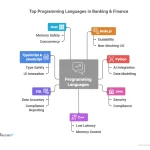
What are IMF Finances? There are several ways to access the Fund’s resources. The current situation in the global financial system makes the IMF a useful source of emergency finance. Emergency financing is available to members in times of crisis, usually during short time periods, or in post-conflict situations. These arrangements normally limit the use of IMF resources to 25 percent of the country’s quota, but countries can request more than that if they so wish.
The IMF’s Financial Accounts contain a series of balances and accounts. These balances are used to measure progress on a variety of economic indicators. Creditors can provide resources to members if they are making “reasonable efforts.” The first credit tranche is equivalent to 25 percent of a country’s quota, and higher quotas require substantial justification. The IMF’s Credit Facility (FCF) is the source of financial resources.
The IMF has a financial transaction plan, previously known as an operational budget. It outlines the amount of SDRs and selected member currencies that will be transferred or received by a country. This plan was first developed in response to the external debt crisis in the late 1970s, and was meant to mobilize financial support to debt-servicing countries. Members’ governments would then receive assurances from the IMF before the IMF would make the funds available.
IMF Finances is a vital part of the institution’s overall mission. It enables the organization to provide emergency lending to members in need. The IMF relies on these resources to help their economies stabilize. The Fund has the power to lend up to SDR 34 billion annually. All of these resources are used by member countries. However, they cannot exceed SDR 34 billion. The financial operations of the IMF involve two main parts: the General Resources Account (GRA) and the Borrowed Resources Suspense Accounts (BRA).
Besides the SDA, the IMF’s other primary role is to provide international reserves. SDRs, which are issued by the Fund, can be used for various purposes. For example, they can be used to supplement member countries’ official reserves and provide liquidity to countries that need it most. The Fund also helps countries access debt relief by offering special terms to low-income members. However, this program can be difficult to implement without the appropriate resources.
In addition to providing emergency support, the IMF can help countries with balance of payments crises. Emergency measures enable the Executive Board to approve IMF financial assistance quickly, and ensure conditionality. But these measures are only effective when countries are facing a crisis in their balance of payments. IMF Finances
While precautionary and emergency financing are the two primary types of IMF funds, the Short-term Liquidity Line provides financial assistance to countries with a current balance-of-payments need. Moreover, countries that have strong policy frameworks and track records can apply for the Flexible Credit Line. The IMF has recently approved new Flexible Credit Lines worth $51 billion to Morocco. And the Precautionary and Liquidity Line helps countries with moderate balance of payments problems.






